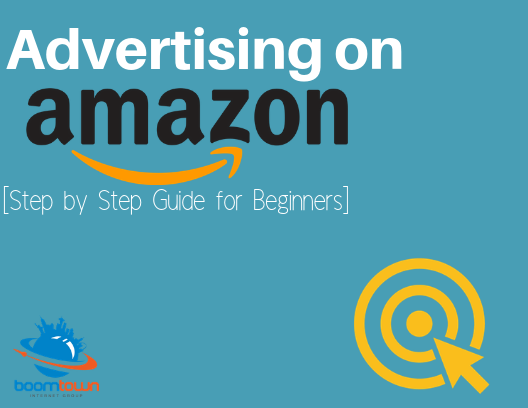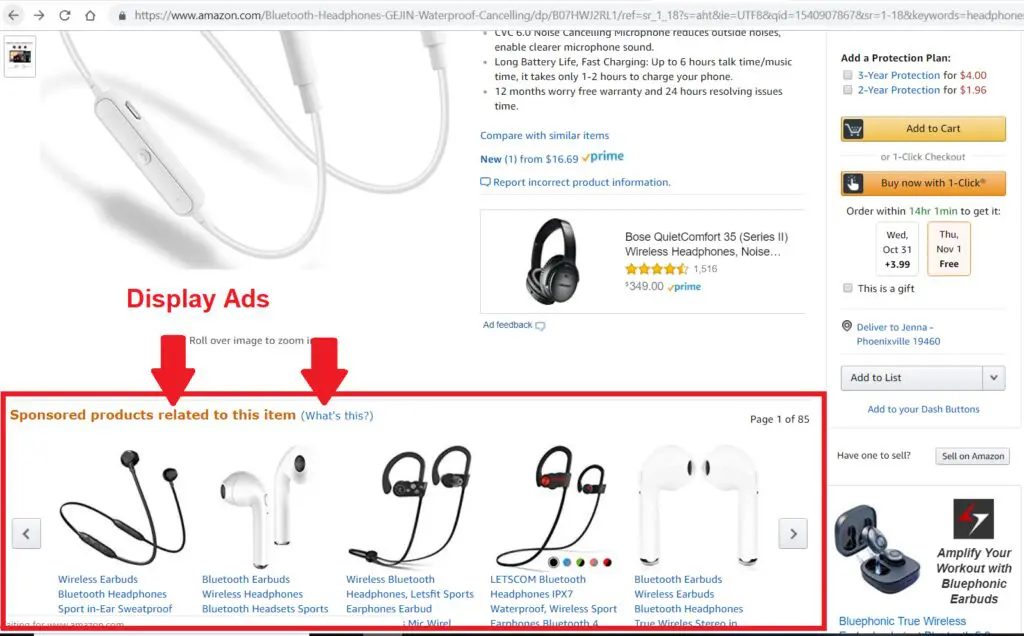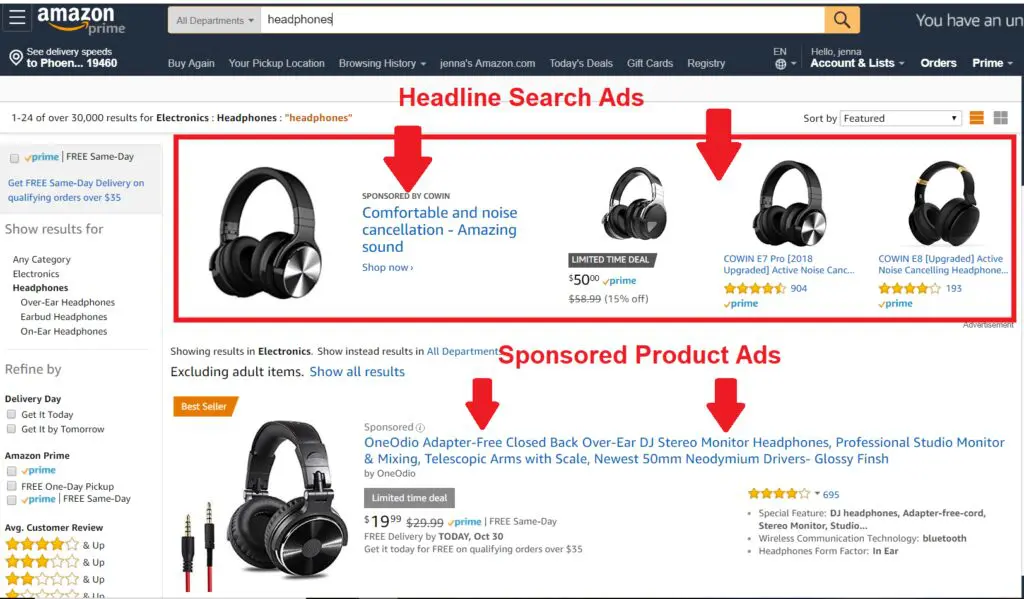Is your e-commerce business crushing it with Google Shopping, Facebook and Instagram? Are you looking for a way to continue to grow your online revenue? Or maybe your e-commerce business needs a new direction? If so, it may be time to take on the largest and most popular e-commerce platform, Amazon.
Amazon has a vast amount of traffic, credibility and the brand value you need to help drive sales. The choice to sell and ultimately advertise on Amazon is pretty much self-explanatory as users typically have high intents to purchase when surfing the site. If you’re interested in learning more about selling on Amazon, check out my recent article explaining the benefits of setting up an Amazon shop. If you’re already convinced that Amazon is the e-commerce partnership you need to pursue or have an existing shop that needs a boost in revenue, marketing on Amazon will get you where you want to be. Before we break down the tips you should know about developing an Amazon marketing strategy, let’s first cover the basics of Amazon’s ad platform.
Options for Amazon Ad Platform
Amazon Marketing Services (AMS)
Amazon has their own pay-per-click (PPC) advertising platform with a variety of options and benefits for Vendor and/or Seller accounts that may cause confusion for marketers or business owners trying to advertise on the platform. The advertising options for Vendor Central (manufacturer or distributors acting as first-party sellers to Amazon in bulk, invitation only) vs. Seller Central (third-party seller who sell directly to Amazon customers) differs, Vendor Central grants you access to Amazon Marketing Services, ultimately providing you with more marketing options.
Amazon Sponsored Product Ads
These are the ads that appear at the top and bottom of the organic results on search results pages. The Amazon’s Sponsored Products Ads are auction-driven and keyword-targeted campaigns. When executed correctly, your specific product ads will appear to users who are searching for relevant terms; therefore your products will show for the most relevant keywords. As a result, Sponsored Products Ads can not only help accelerate awareness for ASINs with low impressions but also help drive revenue. Below are some examples of how Sponsored Product Ads appear in search results.
Amazon Product Display Ads
Amazon’s Product Display Ads are ads with an image of your chosen SKU that are shown on other vendors, including your competitors, product detail pages. These campaigns are triggered based on targeting similar products, relevant categories, or interest groups. They can effectively boost visibility for individual products and can help promote your presence over your competitors. When executed correctly, your product should show above competitors’ products that are either more expensive or have lower ratings. In addition, product display ads can appear on customer review pages and search result pages.
Amazon Headline Search Ads
Headline Search Ads are the product ads that appear at the top of the search results pages when a customer is shopping from both a desktop or mobile device. Headline search ads appear at the top of the SERPs. They present your product as the first shown to potential customers, which can have an immediate ROI. Also similar to Google ad format, headline search ads operate on a cost-per-click basis and are keyword targeted.
Amazon’s Demand Side Platform (DSP)
Formerly called Amazon Advertising Platform (AAP)
Similar to Google’s Display Network, Amazon also has it’s Demand Side Platform (DSP) which is a managed service, either from Amazon directly or one of their accredited agencies. Advertising through DSP allows your ads to reach Amazon users on various 3rd party website and apps through remarketing display ads, banner ads, and videos ads. DSP campaigns are targeted through programmatic technology and can be an effective way to increase brand awareness.
Getting Started with Amazon Advertising
Before you get started with advertising on Amazon, you’ll need to set up an Amazon shop to act as your hub for your Amazon business. For more information on getting started with selling on Amazon, check out my recent blog post.
Essential Components of an Amazon Marketing Strategy
Advertising on Amazon may be challenging and overwhelming. Here are a few Amazon marketing tips that you can easily implement into your campaigns that will not only drive sales but help you stand out against the competition. Amazon is full of potential customers looking to make a purchase. Therefore, through a properly implemented, optimized and well-managed campaign, all you have to do is get your products in front of the right customer to reel them into your business.
- Properly Utilize Match Type in Your Keyword Targeting
If you’re familiar with implementing Google Ad campaigns, then the functionality and concept of keyword match types for Amazon ads should be easy to comprehend. Just like with Google Ads, Amazon ads uses broad match, phrase match, exact match, and negative keywords to refine the targeting of your campaigns. Understanding each match type and properly implementing them in relation to your campaign goals is key to improving advertising cost of sale (ACoS), increasing ad relevancy and driving sales.
An overall rule of thumb is to stick with phrase match and exact match keywords while funneling out irrelevant search terms with the negative match feature. In general, broad match type is too vague and wideset. However, if you’re looking to jumpstart a new campaign, especially for a new product, and discover new useful keywords, you may consider testing broad match keywords and then funneling the converting keywords from that campaign into a campaign using a more refined keyword match type.
- Optimize, Optimize, Optimize
Whether with organic or paid results, there’s one common denominator, Amazon wants to deliver the best user experience and users want to see the most relevant products to their search query. Therefore, it’s critical that your product listings are optimized with your targeted keywords; this proves to Amazon that your product is actually relevant to your targeted keywords. With this being said, you must incorporate your targeted keywords into your product listings in a way that is digestible, strategic and easy to read by consumers. Keep in mind that your main priority is to catch the user’s attention and quickly get them to convert.
- Target Relevant Long-Tail Keywords
Long tail keywords are keyword strings consisting of 3 or more specific search terms put together. For example, “modern black flush mount ceiling lights.” If your product is flush mount ceiling lights, this potentially would be a good long tail keyword to target and would allow your ad to show up for an extremely relevant search, which would result in a higher rate of conversion. Often when your ads appear for potential customers searching long tail keywords, you’ll be able to convert them into a customer.
- Organize Your Campaign to Improve Targeting and Maximize Profit
Again, just like with Google Ads, the structure of your campaign is critical to creating cost-effective campaigns that drive revenue and increases ROI. Messy and unorganized campaigns can quickly waste money on irrelevant clicks with higher CPCs. While there are a variety of debatable best practices for structuring campaigns, the same overarching logic applies, group relevant products/product categories into campaigns then break it down from there with related keywords.
For example, if I sell women’s shoes, my campaigns may look like the following:
- Women’s Sneakers
- Women’s Boots
- Women’s Heels
- Women’s Sandals
Under these campaigns should be smaller adgroups that target relevant keywords, for example:
- Women’s Sneaker: Running sneaker, cross training, slip-on sneaker
- Women’s Boot: Heeled boots, ankle boots, over the knee boots
- Women’s Heel: Strappy heels, stiletto heels, wedge heels
- Women’s Sandal: wedge sandals, leather sandals, flip flop sandals
- Gather Data from Automatic Campaigns
Amazon offers two targeted types for campaigns: automatic campaigns and manual campaigns. As you can probably infer from their names, an automated campaign lets Amazon take control of the keywords your product ads target based on your product listings. While manual targeting campaigns provide you with more control and potentially improved ROI. Running short tests with automatic targeting campaign, especially with new ad campaigns, can provide insight and data into new keywords and determine the keywords that are most profitable. I wouldn’t, however, suggest just letting automatic campaigns run freely. Instead, let them go for a few days, then download the search reports and use the data collected to shape your future manual campaigns.
- Visuals Matter!
You only have a few seconds to grab the users’ attention, even less in a marketplace as cluttered as Amazon. As marketers, this means we need to sell potential customers on the product benefits in the quickest way possible. Images are consumer’s favorite way to take in information. Therefore, your product visuals and photography are the first and maybe only experience potential customers will have with your product, so make sure you execute them well.
Are You Ready to Sell on Amazon?
Whether you’re a business looking to sell your products or services, Amazon’s e-commerce power and logistical advantages are unmatched tools that can help expand your business and increase revenue far beyond what you’d most likely be able to achieve on your own. However, creating, marketing and growing an Amazon store takes extensive knowledge, time, and attention.
Contact us today to learn about how our Amazon selling and marketing services can help increase sales and expand your business.




